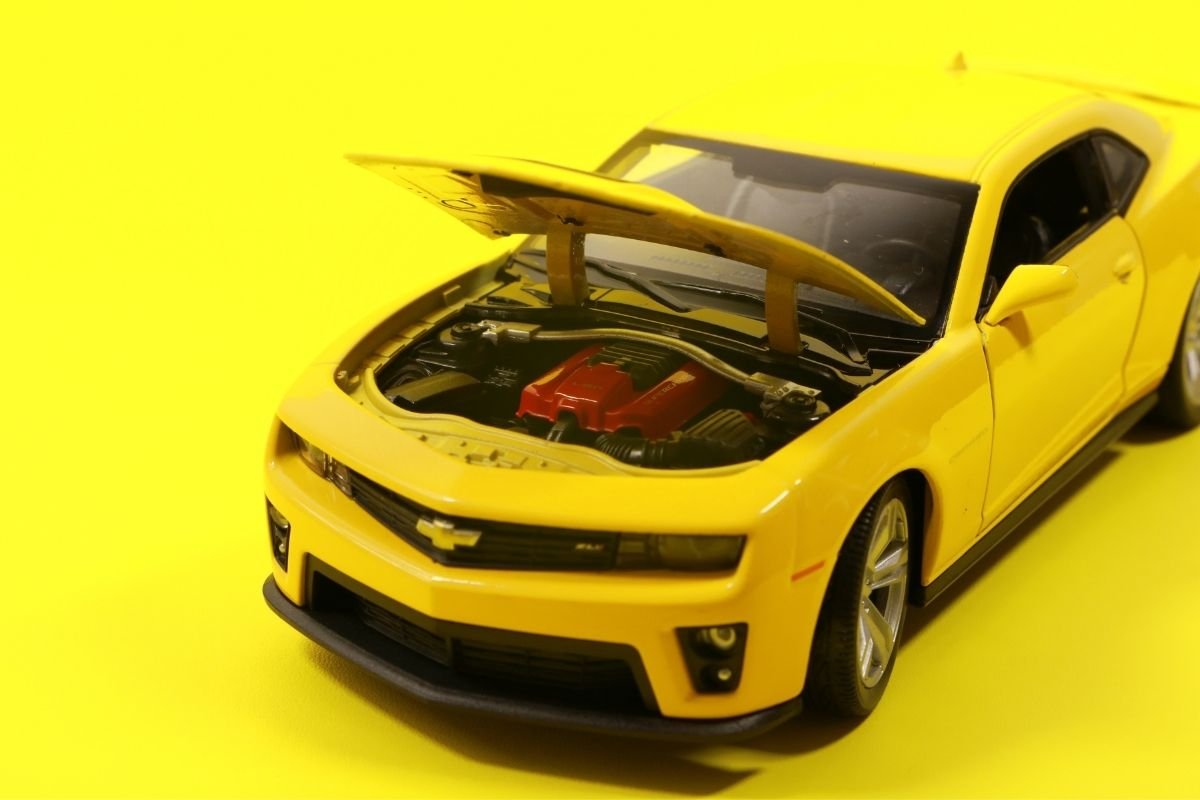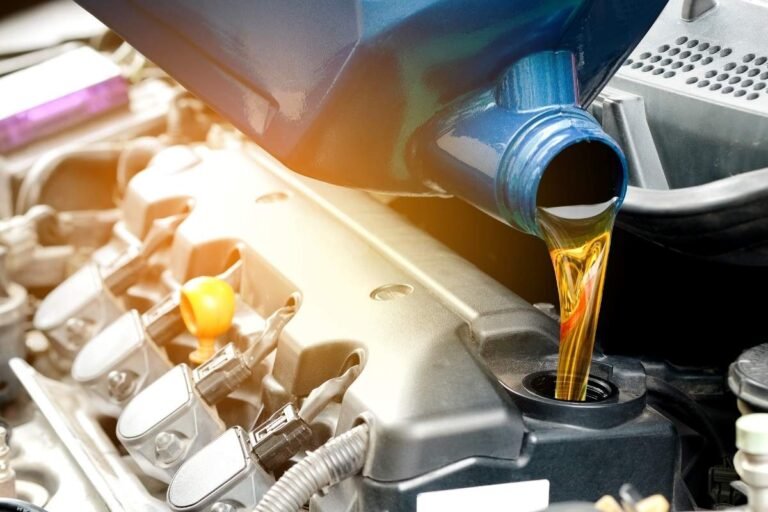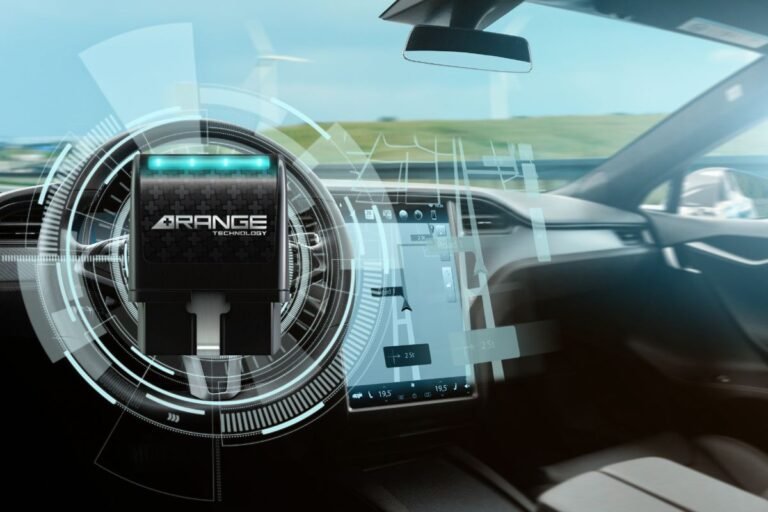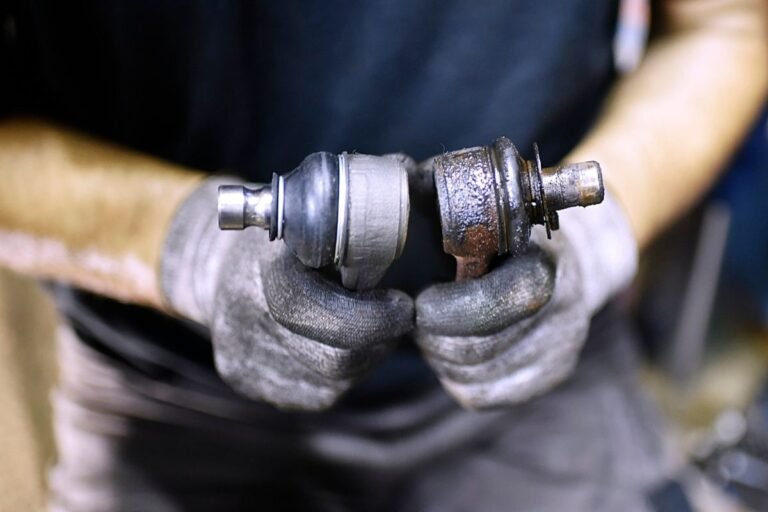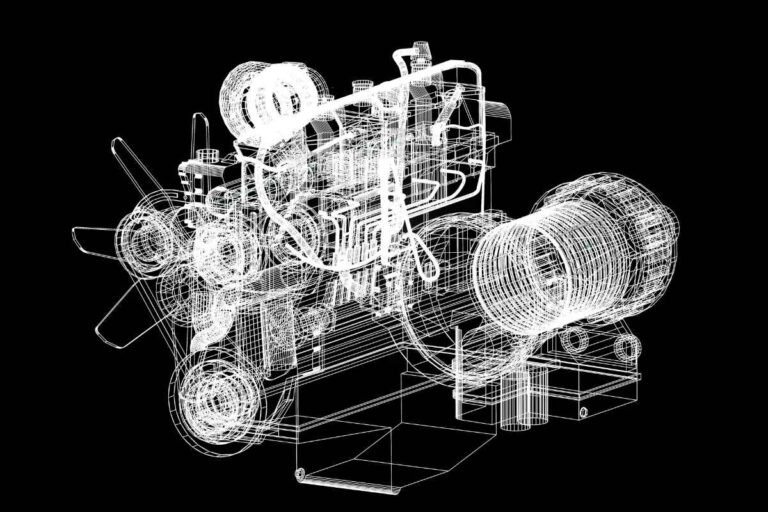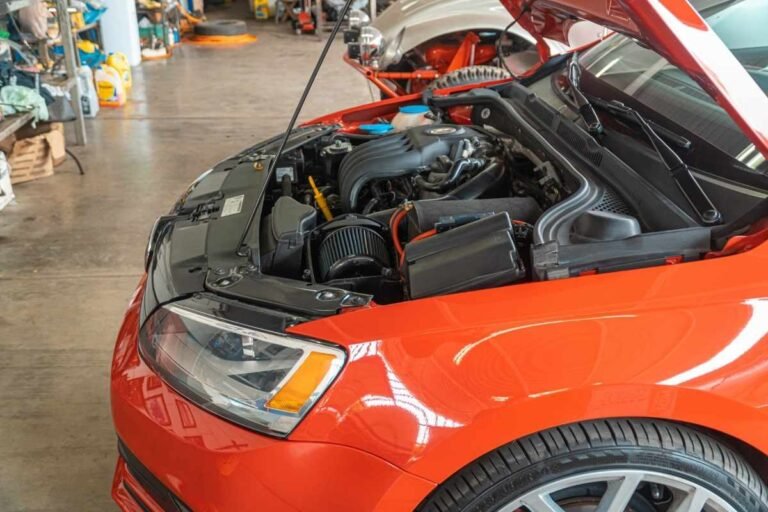Chevy Colorado Years To Avoid!
Long-running, the Chevy Colorado has been lauded as a versatile and dependable mid-size truck, balancing performance, towing capability, and off-road prowess. Of course, all model years don’t hold up to driver expectations, and some Chevy Colorado years to avoid are essential.
Some of the model years of the Chevy Colorado have been marred by transmissions that fail, engine stalling, electrical malfunctions, and even rust-related concerns, among other key issues. These repeated issues have been responsible for some costly repairs, repeated recalls, and owner frustration.
Knowing which model years to avoid can make a lot of difference when investing in a used Chevy Colorado. Buying a year full of problems will result in unexpected breakdowns and costly repair bills, hence diminishing value.
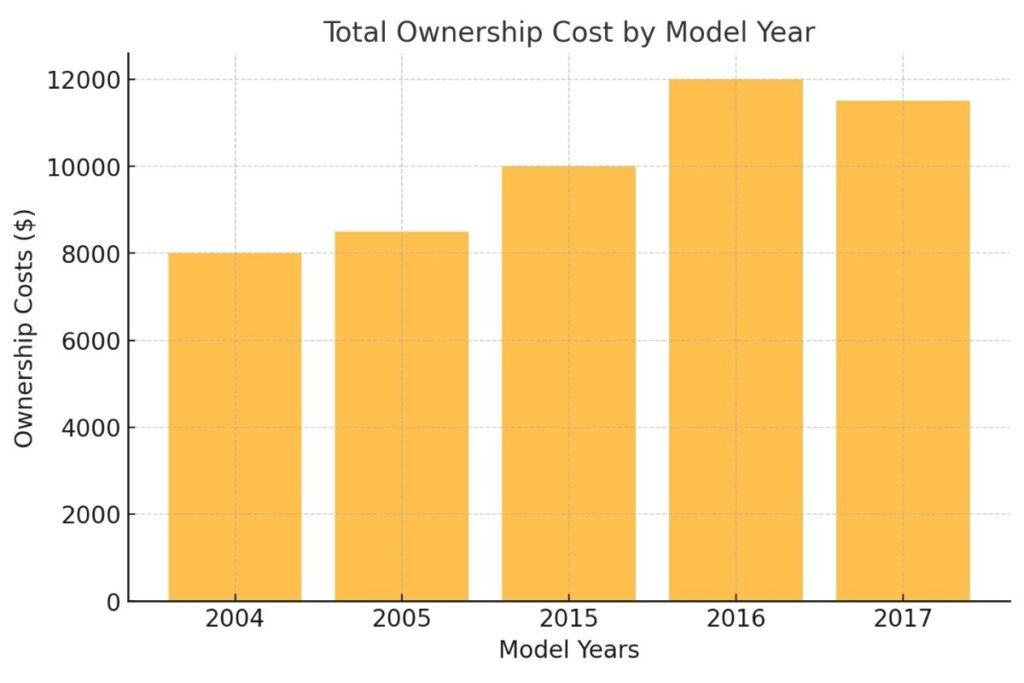
Evolutions of Chevy Colorado Over the Years
The Chevy Colorado is a popular mid-size pickup truck that was first introduced in 2004 to replace the Chevrolet S-10. It was designed to provide a perfect balance between functionality and drivability. Over the years, it has gone through several generations:
First Generation (2004-2012):
- Co-developed with the GMC Canyon.
- Offered in several configurations, such as regular, extended, and crew cab styles.
- Engine options varied from a 2.8L 4-cylinder to a 5.3L V8, serving a wide range of needs.
- Although well-received at first, it underwhelmed in interior quality and technology.
Second Generation (2015–2022):
- Reintroduced after some hiatus in 2013 and 2014.
- The redesign focused more on fuel efficiency, modern features, and towing.
- Available engines included the 2.5L 4-cylinder, 3.6L V6, and 2.8L Duramax diesel-the last one for class-leading towing.
- Sold well on the back of improved styling, more comfort, and a raft of advanced safety features.
Third Generation (2023–Present):
- Arrived with a major redesign, with a more bold design and modernized technology.
- Emphasizes off-road capability with trims such as the Z71 and ZR2.
- 2.7L turbocharged engine offered in various states of tune.
- Connectivity, driver-assistance systems, and interior refinement are top of mind.
Popularity and Notable Features Across the Years
The Chevrolet Colorado has long been a top mid-size pickup truck challenger, best described by its diverse array of options and features.
These include the following: versatility offered by its many available configurations to meet both work and recreational needs; powertrain variability for both diesel and gasoline engines; off-road capability in special trims, like the ZR2; and the infusion of advanced technologies into later generations.
It has been the best in class for several model years, representing a go-to choice for those who require a capable workhorse.
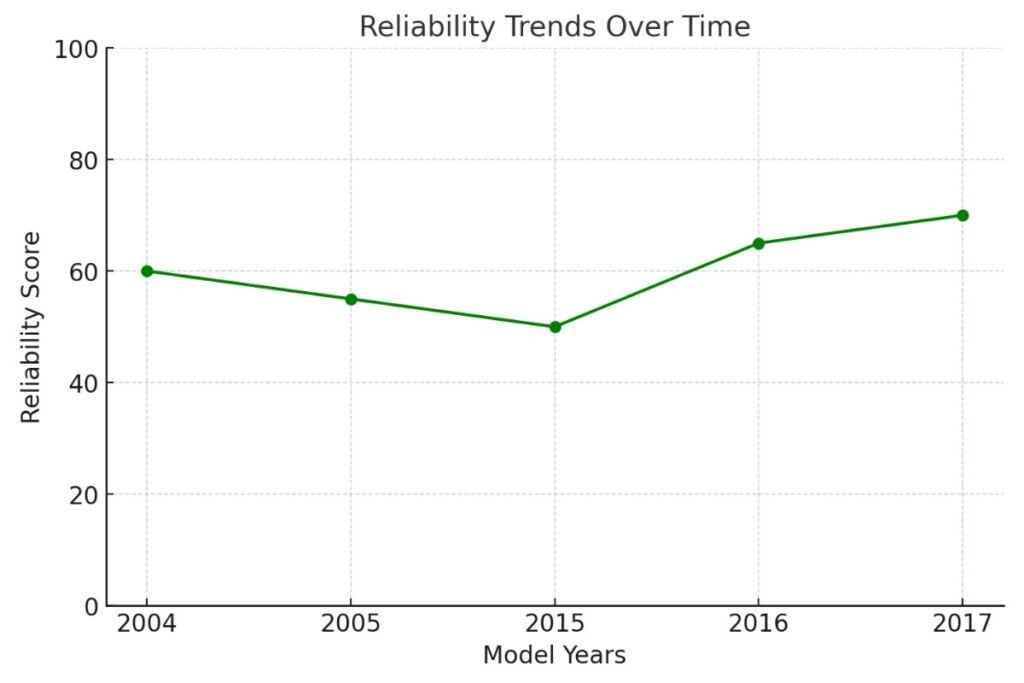
Chevy Colorado Years To Avoid
To the buyers of used Chevy Colorados, one thing they would want to be sure of is the problem years.
With several model years experiencing recurring issues, they have seen various complaints from the owners due to the high cost of repairs and dissatisfaction from the customers; these vehicles mostly have had transmission failures, electrical malfunctions, and even concerns with the vehicle’s reliability.
It could just save the next buyer some costs and headaches he did not anticipate.
Chevy Colorado Problems Heatmap
| Year | Transmission | Electrical | Engine | HVAC | Structural |
| 2004 | High | Medium | Low | Low | High |
| 2015 | High | Medium | Medium | High | Low |
| 2016 | Medium | High | High | Low | Medium |
Most Problematic Years to Avoid
Below is a table summarizing Chevy Colorado years to avoid, including common issues and estimated repair costs:
| Model Year | Common Issues | Average Repair Cost | Key Notes |
| 2004–2006 | Transmission failure, electrical issues | $2,000–$4,000 | First-generation models with frequent reliability complaints. |
| 2015 | Transmission shudder, air conditioning failure | $1,500–$3,500 | Issues despite the launch of the second generation. |
| 2016–2017 | Engine stalling, faulty electrical system | $2,500–$4,500 | Increased recalls and widespread owner dissatisfaction. |
Detailed Breakdown of Specific Problematic Years
1. 2004–2006
- Key Issues:
- Transmission failures due to design flaws.
- Electrical malfunctions, including issues with the power windows and dashboard displays.
- Poor-quality interior materials prone to wear and tear.
- Recall History:
- Multiple recalls for faulty airbags, fuel system leaks, and brake light malfunctions.
- Customer Complaints:
- Reports of excessive vibration during driving.
- Difficulties in finding replacement parts for specific components.
- Average Repair Cost: $2,000–$4,000 depending on the severity of transmission or electrical failures.
2. 2015
- Key Issues:
- Transmission shudder, particularly in vehicles with the 6-speed automatic transmission.
- Air conditioning system failure due to a defective compressor.
- Engine reliability concerns, including stalling at low speeds.
- Recall History:
- Issues with airbag sensors and defective seatbelt components.
- Customer Complaints:
- Frustrations with the high frequency of transmission repairs soon after purchase.
- Heat and AC problems significantly affecting comfort.
- Average Repair Cost: $1,500–$3,500 for transmission and AC system repairs.
3. 2016–2017
- Key Issues:
- Engine stalling due to faulty sensors and inadequate fuel delivery.
- Electrical issues, such as flickering headlights and malfunctioning radio systems.
- Structural rust, especially in colder climates where road salt is common.
- Recall History:
- Widespread recalls for fuel pump failures and steering column defects.
- Customer Complaints:
- Poor resolution of electrical issues even after multiple repairs.
- High cost of replacing engine components.
- Average Repair Cost: $2,500–$4,500 depending on the extent of engine or electrical repairs.
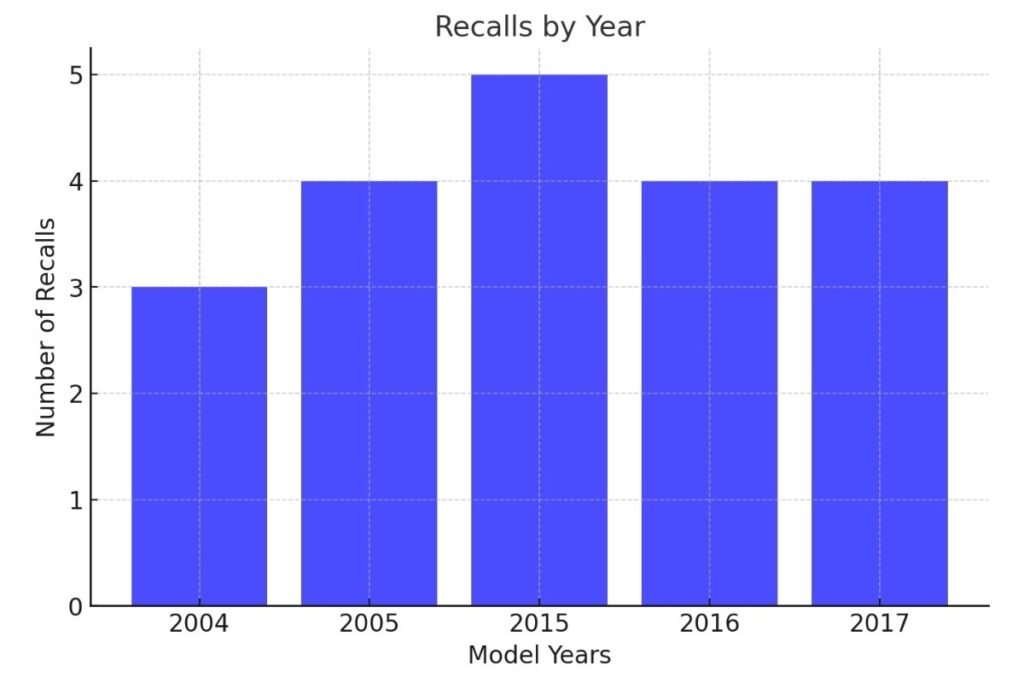
Common Problems with Chevy Colorado in Problematic Years
1. Transmission Issues
One of the most common complaints in the problematic years of the Chevy Colorado is its transmission system. Common issues with its transmission include:
- Slipping Gears: Drivers often complain of sudden gear shifts or slipping, especially in the 2015 model year.
- Shuddering or Vibrations: More noticeable in 6-speed and 8-speed automatic transmissions, it results in a bad driving experience.
- Complete Transmission Failure: It happens in early models (2004–2006); many times, it requires a complete replacement.
- Repair Costs: Generally, transmission repair costs range from 2,000 to 4,000 dollars, contingent on the seriousness of the impairment.
2. Electrical System Faults
Electrical defects affected many Chevy Colorados, predominantly in the first-generation models and during 2016-2017 models. Some primary concerns include:
- Headlights Flicker/ Fail: Lights flicker or fail to operate altogether. This is quite dangerous.
- Failures in the Dashboard: Gauges, displays, and other components of the dashboard either fail to work or show incorrect information.
- Power Window Malfunctions: The motors and regulators of the window fail prematurely.
- Electrical Repairs: Electrical repairs cost between $500 and $1,500, depending on the component involved.
3. Engine Issues
The engine is another critical area where some Chevy Colorado models tend to have issues. Common issues regarding the engine include:
- Stalling: The engines may stall without prior warning, especially for the 2016–2017 models, due to faulty sensors or insufficient fuel delivery.
- Loss of Power: There are complaints of severe power loss while accelerating; this is mostly related to transmission or engine control issues.
- High Oil Consumption: Experienced in previous models, which put greater stress on engine parts.
- Repair Costs: Estimates for an engine repair or replacement cost fall between $2,500 and $5,000.
4. Structural Problems
There are structural issues reported with some Chevy Colorados, especially from the earlier years:
- Rust and Corrosion: Many early models produced between 2004 and 2006 suffer from rusting frames and undercarriage, especially those exposed to high use of road salt.
- Suspension Issues: Premature wear on the suspension system results in a rough ride and uneven tire wear.
- Door and Window Seals: Poor sealing leads to water leaks and wind noise over time.
- Repair Costs: Structural problems can cost anywhere from $1,000 to $3,000 to repair, depending on the severity.
5. Air Conditioning and Heating Failures
- AC Compressor Issues: The 2015 model has gained notoriety for its air conditioning failures resulting from defective compressors.
- Heater Malfunctions: The most frequent complaints are about insufficient heating during colder months.
- Repair Costs: Repairing HVAC-related issues costs anywhere between $1,500 and $3,000.
6. Safety and Recall-Related Problems
- Faulty Airbags: During certain problematic years, such as the 2004–2006 models, recalls were issued for defective airbags.
- Brake System Malfunctions: Several cases of brake failure due to worn-out parts or faulty ABS mechanisms.
- Steering Issues: Defective steering columns, especially in the 2016–2017 models, result in degraded handling performance.
- Costs to Repair: Safety-related repairs vary but have often exceeded $1,500.
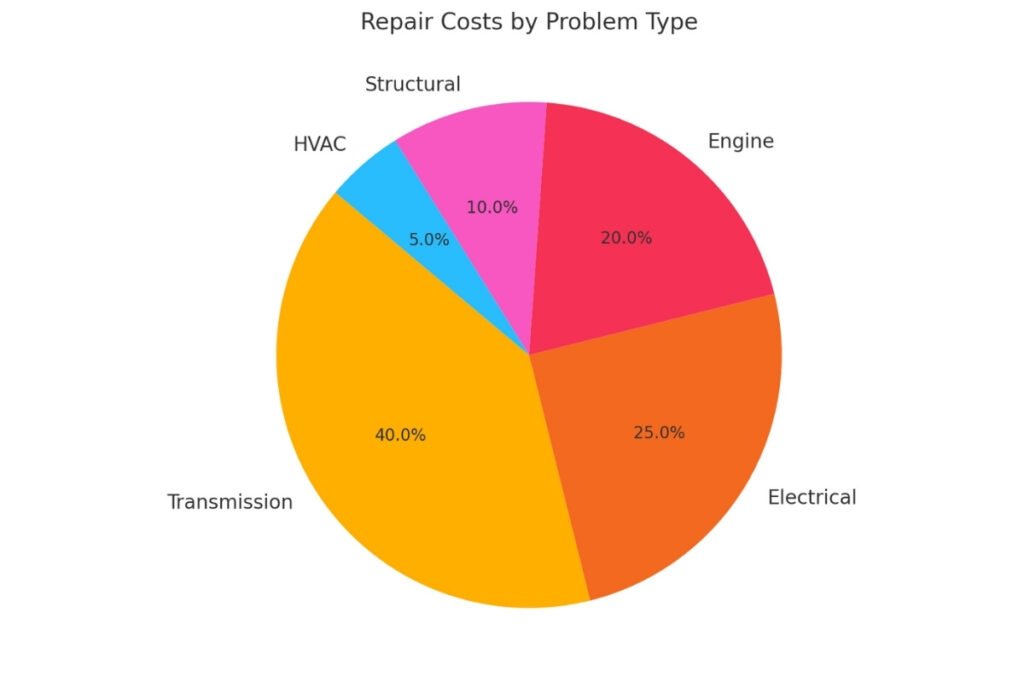
How to Identify a Problematic Chevy Colorado
Before purchasing a used Chevy Colorado, it’s very important to determine some of those red flags that could raise an issue with the model.
Knowing what to look for and asking the right questions will help buyers avoid costly repairs and make sure they invest in a reliable vehicle. Here’s how:
1. Signs of Wear and Tear Specific to Problematic Years
Evidence may tell of hidden issues in generally problem years, say, 2004–2006, 2015, and 2016–2017. Be keen on the following:
Transmission Behavior:
- Late shifting, jerking, or irregular vibrations during test drives.
- Warning lights on the dashboard concerning transmission.
Electrical System Performance:
- Check all the lights, headlights, brake lights, and interior dashboard lights for any flickering or failures.
- Power windows, locks, and infotainment systems-on/test for proper operation.
Engine Performance:
- Knocking or excessive noise or rough idling;
- stalling or hesitation during acceleration;
Rust and Corrosion:
- visually inspect undercarriage, wheel wells and frame for rust or corrosion;
- bubbling paint or areas where rust may continue to spread;
Air Conditioning and Heating:
- Turn the AC and heating systems on to ensure proper cooling and heating;
- unusual noises while the systems operate;.
Suspension and Ride Quality:
- Look for uneven wear on tires that might indicate some kind of suspension or alignment problem.
- Note any clunking when cornering or driving over bumps.
2. Questions to Enquire from the Seller or Dealership
Have discussions with the seller or dealership about specific questions to identify the possible issues. Walk them through every question related to the history of the car:
History:
- “Is there any major replacement or repair on this vehicle?”
- “Are there records of regular maintenance and oil changes?”
Recall and Repair:
- “Are any model-related recalls addressed by your dealership?”
- “Any recent repairs on transmission, engine, or electrical?
- “Was it used most for personal use, work, or towing?”
Reason for Selling:
“Why is the vehicle being sold?”
- Be suspicious if the reason is due to mechanical issues not having been resolved.
Extended Warranties:
- “Is any factory warranty still remaining or is an extended warranty available?”
3. The Importance of Getting a PPI
The PPI performed by a mechanic certifies your getting a truly dependable Chevy Colorado, for which here is why this one’s very critical:
Expert Analysis:
- Mechanics identify defects that aren’t obvious and otherwise difficult for one to observe unaided: problems internal within the engine and rusting that may have only started.
Detailed Reports:
- A PPI provides a comprehensive report on the vehicle’s current condition, highlighting potential repairs or concerns.
Cost Assessment:
- The inspection can help estimate repair costs, allowing you to negotiate a better price or avoid the purchase altogether.
Peace of Mind:
- Knowing that a professional has inspected the vehicle ensures you’re making an informed decision.
Tips for Buyers
- Always take a test drive in the vehicle for at least 15–20 minutes, driving both on highways and in the city.
- Use Carfax or AutoCheck to check the history of the car for any accidents, changes in ownership, or mileage discrepancies.
- Also, avoid those with inconsistent maintenance records or repeated issues with key components.
Best Chevy Colorado Years To Buy
Although some Chevy Colorado years have their problems, a number of model years in the line really stand out for their reliability, great performance, and overall customer satisfaction.
Buying these can greatly give peace of mind and an excellent driving experience.
Standout Chevy Colorado Years
Here’s a list of the best Chevy Colorado years, along with their highlights:
| Model Year | Reasons to Buy | Notable Features |
| 2012 | Last year of the first generation with improved reliability. | Refined 5-cylinder engine, fewer recalls, durable design. |
| 2018 | Stable performance with significant tech upgrades. | Smooth 8-speed automatic transmission, improved towing capacity. |
| 2020 | Advanced safety features and robust off-road trims. | Added driver-assist features, refined interior, ZR2 Bison trim. |
| 2021 | Incremental improvements with excellent value. | Revised front fascia, wireless Apple CarPlay, and Android Auto. |
| 2022 | One of the most refined second-generation models. | Durable design, reliability improvements, excellent off-road capability. |
Breakdown of Top Years
1. 2012
Why It’s Reliable:
- This is the last year of the first generation, so GM had ironed out most of the earlier problems, including the transmission and electrical bugs.
- Less complicated design, hence easier and cheaper to maintain.
Key Features:
- Improved 5-cylinder engine with better durability.
- Interior design is simple, utilitarian.
Comparison to Problematic Years:
- Unlike the 2004–2006 models, the 2012 model has better engine reliability and fewer electrical glitches.
2. 2018
Why It’s Reliable:
- Major upgrades in transmission performance that remove the shudder issues found in the 2015–2017 models.
- Very few customer complaints and fewer recalls compared to earlier years.
Key Features:
- Introduction of an 8-speed automatic transmission for smoother shifting.
- Improved towing capacity of up to 7,700 lbs with the Duramax diesel.
Comparison to Problematic Years:
- Unlike 2015, the transmission is more reliable and refined.
3. 2020
Why It’s Reliable:
- GM made sure to incorporate advanced safety and convenience features, easily making this a great all-around option.
- The ZR2 off-road trim is exceptionally capable.
Key Features:
- Lane departure warning, forward collision alert, and a high-resolution rearview camera.
- Very strong build quality with very few customer complaints.
Comparison to Problematic Years:
- Unlike 2016–2017, the 2020 model shows fewer engine and electrical system failures.
4. 2021
Why It’s Reliable:
- Smarter incremental improvements to the 2020 model.
- More tech additionals. Restyled for added modern appeal.
Key Features:
- Wireless Apple CarPlay and Android Auto.
- Improved front-end design with better aero.
Comparison to Problematic Years:
- More advanced in features and far more reliable compared to earlier second-gen models.
5. 2022
Why It’s Reliable:
- Being the last year of the second generation, this is one of the most sorted Chevy Colorado models.
- Durable and well-equipped for on-road driving or going off-road.
Key Features:
- High customer satisfaction ratings as it maintains reliability and performance.
- Off-road capable trims such as the ZR2 and Z71 are available.
Comparison to Problematic Years:
- No transmission issues found like on other second-generation models, and the same goes for the engine.
Why These Years Stand Out
- Improved Reliability: Fixed recurring problems of the problematic years, including transmission failures and electrical malfunctions.
- Modern Features: Introduction of advanced safety features, better infotainment, and refined interior.
- Better Resale Value: High reliability and customer satisfaction make these years more desirable on the used market.
- Off-Road Capability: The ZR2 and Z71 trims are among the best trims for adventure lovers.
Expert Tips for Buying a Used Chevy Colorado
Buying a used Chevy Colorado can be one of the best investments if you take the right steps to make sure you purchase a reliable vehicle. Here are some expert tips that will help in making an informed decision:
1. Conducting Thorough Research on a Vehicle’s History
Knowing your vehicle’s history is the key to avoiding unexpected problems in the future. Here’s how you can get detailed insights:
- Get a Vehicle History Report: You can use services such as Carfax or AutoCheck for checking accidents, previous ownership, mileage discrepancies, and maintenance records.
- Check Service Records: A well-kept Chevy Colorado will have service records showing regular oil changes, brake replacements, and other routine work. Missing records may point to neglect.
- Look for Red Flags: Watch out for titles indicating salvage, flood damage, or lemon law buybacks. Watch for frequent repairs of major systems.
2. Tools for Checking Recalls and Reviews
Use these tools to determine that the car has no pending recalls and maintains a satisfactory record of reliability:
- National Highway Traffic Safety Administration: Check for open recalls using the vehicle VIN at NHTSA.gov/recalls. See safety ratings of the Chevy Colorado by model year, and read owner reports.
- Carfax Recall Check: Recall status information is always shown on Carfax Reports for an extra layer of confidence in the car’s safety.
- Owner Forums and Reviews: Look for Chevy Colorado owner forums, YouTube reviews, and automotive sites like Edmunds or Kelley Blue Book for any first-hand accounts about reliability.
- Dealership or Manufacturer Websites: Call local dealerships or GM’s recall center to confirm whether recall repairs have been performed.
3. Negotiation Tips for Buying From a Dealer or Private Seller
Whether you’re buying from a dealership or a private seller, negotiation is key to getting the best deal. Here’s how to approach it:
From a Dealer:
- Do Your Homework: Research the vehicle’s market value using tools like Kelley Blue Book or Edmunds. Use this data to back up your offer.
- Point Out Flaws: Highlight issues like worn tires, small dents, or incomplete maintenance records as leverage for a lower price.
- Ask About Dealer Fees: Some dealerships may also charge documentation, preparation, or warranty fees. Negotiate for these or request that they be waived.
- Consider Certified Pre-Owned: If buying a CPO Chevy Colorado, it should come with a good warranty and a comprehensive inspection report.
From a Private Seller:
- Test Drive and Inspect: Always take the vehicle for a test drive to listen for unusual noises, performance issues, or warning lights. If possible, take a mechanic with you to show you problems you might not have otherwise noticed in your pre-purchase inspection.
- Direct Questions:
- “Why are you selling the vehicle?”
- “Has the vehicle been involved in any accident?”
- “Does it have any present problems or upcoming repairs?”
- Be Sure to Bargain with Confidence: Put in an offer with a good, reasonable price and don’t be bullied; be prepared to walk away.
FAQs
What’s the Worst Year for the Chevy Colorado?
The models produced between 2004 and 2006 and between 2015 and 2018 are usually considered the worst because of transmission failures and electrical issues.
Which Year Chevy Colorado to Avoid?
It is best to avoid the 2004 to 2006 and the 2015 to 2018 models since they have more mechanical and reliability issues.
Is the 2015 Chevy Colorado Reliable?
The 2015 model has had questions of reliability, especially regarding its transmission and loss of power steering.
In Which Year Chevy Colorado Had Transmission Problems?
Noticeably, the model years that have presented transmission problems include 2004-2006 and 2015-2018.
Are Newer Models of the Chevy Colorado More Reliable?
Yes, newer models from 2019 and onwards are more dependable since there are fewer issues reported about these.
What are the Common Problems with Chevy Colorado Trucks?
These are common issues like transmission failure, electrical malfunction, engine problems, and structural defects in terms of rust.
How Long Does a Chevy Colorado Truck Last?
A well-maintained Chevy Colorado has been known to surpass 200,000 miles or more, as the durability does vary with model year and care.
Is Used Chevy Colorado Worth Buying?
Yes, it is, but very important to research specific model years and a vehicle history report to avoid known problem years.
What Are the Best Years for the Chevy Colorado?
These models, from 2019 to 2024, can be regarded as the best of all since they’re pretty reliable and have new feature updates.
Has the Chevy Colorado Improved Over the Years?
Yes, it has-especially for models starting in 2019-with improvements in technology, safety features, and overall reliability.

